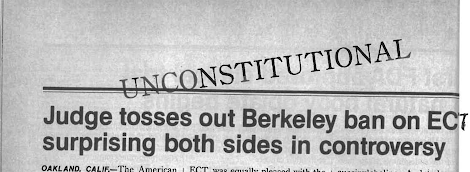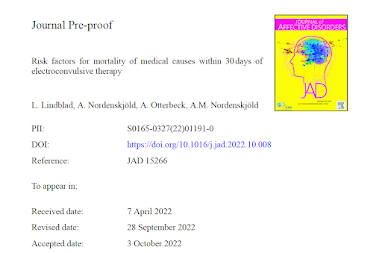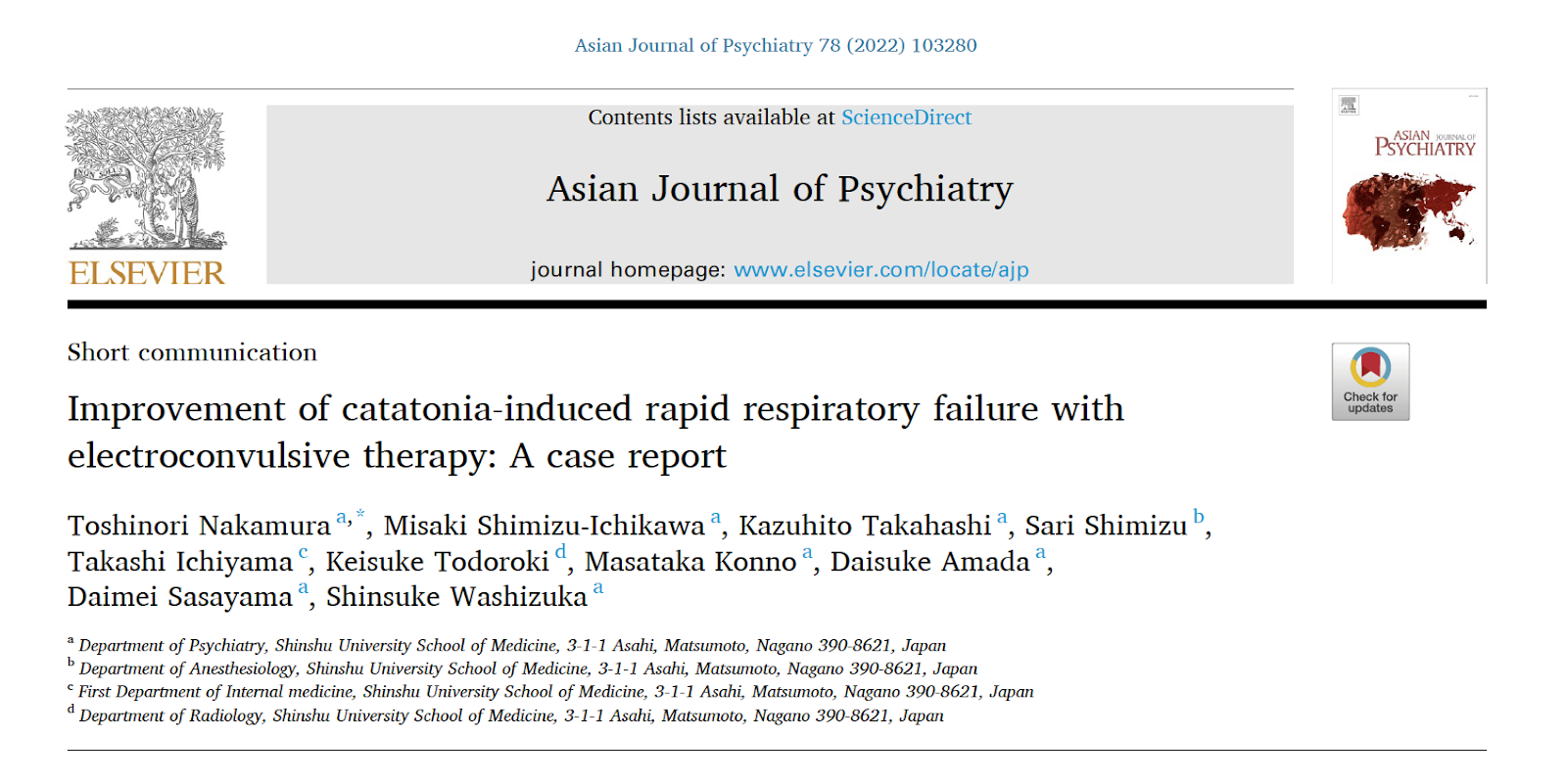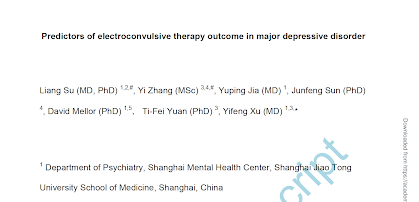Classics in ECT: More on Berkeley Ban on ECT, Medical World News, 1983

"Classics in ECT" brings you this from Medical World News , 1983: Med World News . 1983 Oct 10;24(19):8. PMID: 11649486 No abstract available. Thanks to Dr. W. Vaughn McCall for providing the original text of this document. Please see blog post of October 24, 2022 for additional information about this important historical event in American ECT. The scientific description of "modern ECT" in the above piece is a bit jarring in juxtaposition with the newsy legal account... This article makes it clear how organized Psychiatry in the USA came together to protect patients' rights and access to ECT.









